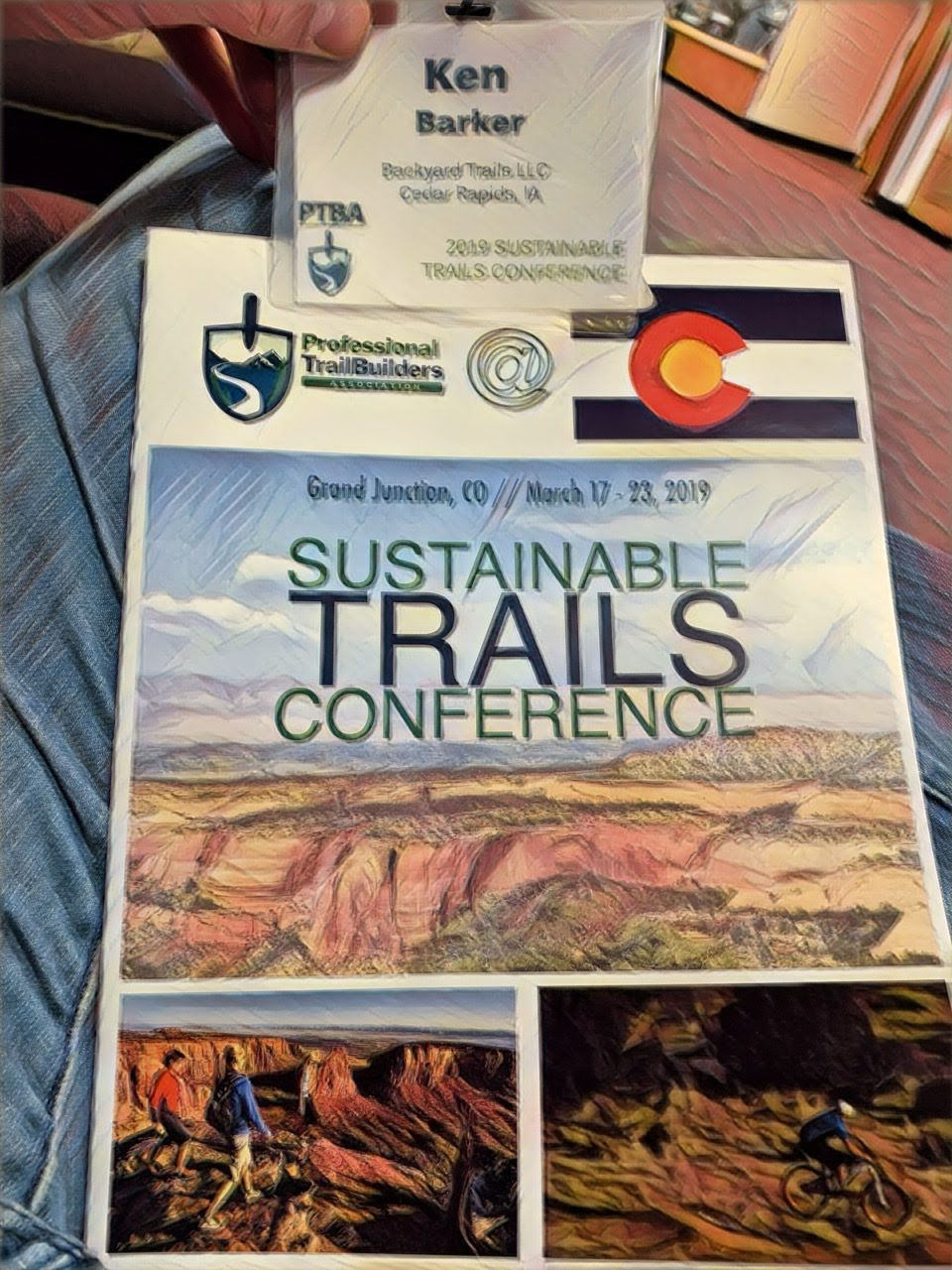Trail Art, Trail Science
- Ken!

- Apr 10, 2019
- 3 min read
Updated: Jun 16, 2020

Last week I had the opportunity to attend the Sustainable Trails Conference in Grand Junction, Colorado. This conference was primarily for professional trail builders, whose dedicated men and women have taken the art and craft of trail building, paired it with science, and worked to develop an industry that develops trails of all types.
My specialty is singletrack trails. Prior to being a professional trail builder, I was a volunteer for ~20 years; I fully understand the dedication, stress, and substantial efforts of volunteer trail advocates. Moving into the world of professional trail building has opened my eyes to the benefits of alternative models of singletrack trail development...
Essentially, three models exist:
1. Volunteer
2. Professional
3. Hybrid (volunteer & professional)
Building singletrack trails is an art and craft with an overlay of various elements: soil types, water management, measurements of grade, intentional trail user experience, etc. It’s a process that requires planning, assessment, management, and a large dose of flexibility. The end result is a community amenity that can be enjoyed for years to come.
Volunteer
As demand for singletrack trails has emerged, a typical development model is frequently a group of enthusiastic volunteers, cutting trails by hand, on parcels and tracts of often underutilized land. Volunteers are capable of great work, their enthusiasm leading to high energy investment in local projects, including much manual labor with minimal cost to the municipality. Many volunteer groups are highly trained, practiced in utilizing hand tools, and at times mechanized equipment.
Drawbacks to the “volunteer only” model revolved around management, volunteer availability, and trail potential realization. Volunteer crew leadership can be a complex and nuanced charge, sometimes a municipality may need to play the role of the leader and or have volunteer management policy. Many volunteers are only available outside of the working day, leading to trail work in the evenings and weekends. This can result in more time necessary for project completion - extending the time needed to complete a trail segment or reroute which drives up costs. The intended trail experience revolves around design, the execution of such plans, and with volunteers… who shows up.

Professional
Professional trail development is a “more modern” approach to singletrack, although, the development model is nothing new for communities. Take a minute to think of all the amenities in your local park system, playgrounds, splash pads, pools, and golf courses. How were these planned and developed? By professionals under contract. The development of singletrack is no different, it’s a community amenity planned and developed in the same manner as other community amenities.
Such trail projects are intentional and often incorporated into master plans. The scope of the project is incorporated into a request for proposals, the bidding process, and contracts are created. The entire process follows similar timelines to the development of traditional community facilities.

Hybrid
The third model discussed here is a combination of the two other models and a simple way to ease mountain bikers and communities into the professional development model. This model utilizes the experience and knowledge of professional trail builders along with various benefits offered by dedicated volunteer groups. The professionals engage in planning and development with support and assistance from volunteers.
In this hybridized option, the community saves money with volunteers completing some work, and volunteers are intimately connected to the development of the project. (It is imperative to have excellent volunteer management in this model as you don’t want to pull your professional from their focus to manage people unless that is outlined in the contract.)

All three models will create more trails in and near backyards, each with their own costs and expenses to be considered, resulting in a variety of trail experiences. The trail building conference I attended highlighted the art and craft of trail building but also spent many hours discussing the science of trails, based upon expert, professional knowledge and experience. This type of training, along with the sheer volume of hours a professional trail builder puts into this craft, is an essential asset in the new models of trail building, allowing communities to move beyond a full-fledged volunteer model to hybridized and professional models.
My observations and experiences have shown me that a properly executed hybrid method produces the best results. When people help make something with their own hands, they will nurture it, perhaps becoming future advocates for trails; which is what singletrack mountain biking needs. I left Colorado inspired to get into local natural spaces, on my own projects for the season, working together to dig in the dirt.






Comments